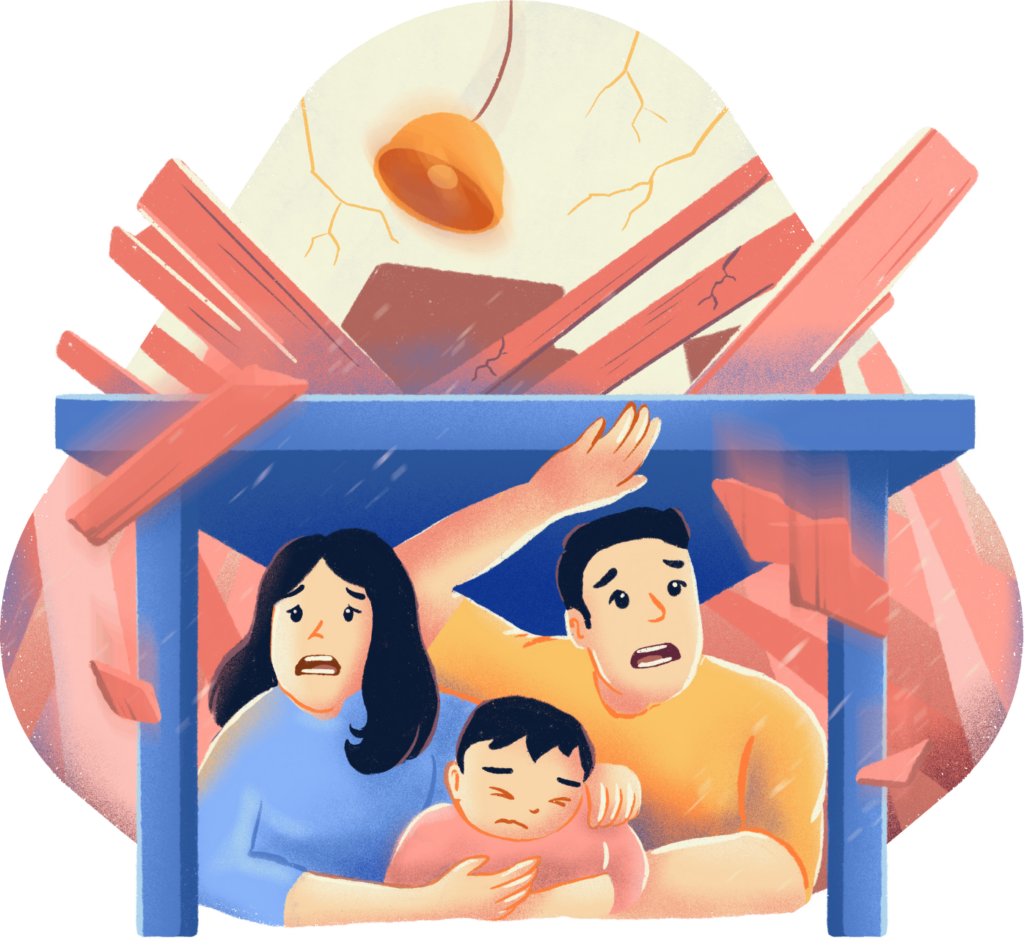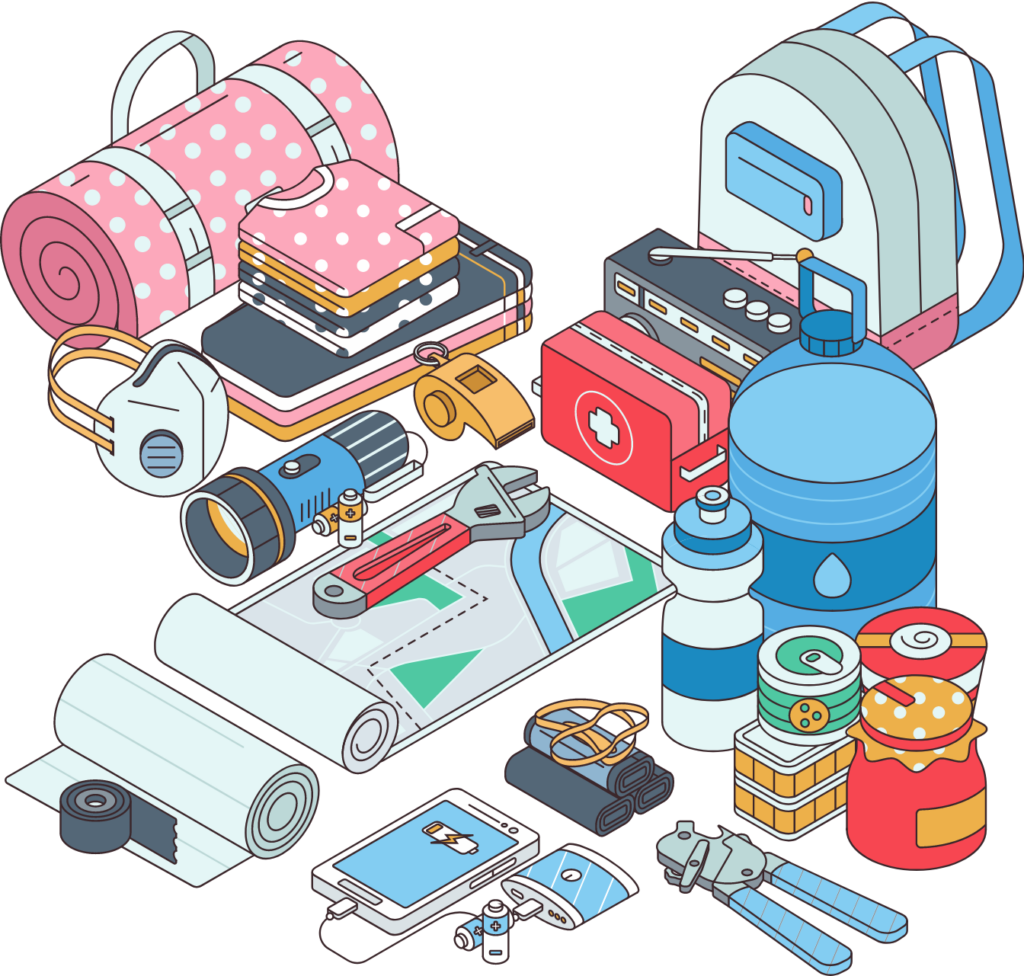Global Career Guide


- Jobs in Japan @ Daijob.com
- Global Career Guide
- Working in Japan
- Disaster Preparedness Guide for Foreign Workers in Japan
Disaster Preparedness Guide for Foreign Workers in Japan


Japan, situated in the Pacific Ring of Fire, is prone to a variety of natural disasters. Being prepared to endure a disaster is crucial for everyone living in Japan, including foreign workers. From earthquakes to typhoons, various disasters can strike unexpectedly, emphasizing the importance of having a solid disaster preparedness plan in place.
In this comprehensive guide, we will cover the expected disasters in Japan, how to prepare for each type of disaster, the necessary precautions to take, essential items to stock in your home, how to create a disaster kit, and tips on maintaining your kit.
Expected Disasters in Japan
Japan faces a range of natural disasters, including earthquakes, typhoons, tsunamis, and even volcanic eruptions. These events can occur with little warning, highlighting the need for proactive preparedness measures.
Earthquakes
Earthquakes are a frequent occurrence in Japan due to its location along several tectonic plate boundaries. To prepare for earthquakes, it is essential to secure heavy furniture and objects to prevent them from toppling during tremors. Identify safe spots in each room where you can take cover, such as under sturdy tables or desks. Practice regular “Drop, Cover, and Hold On” drills to ensure you know what to do in the event of an earthquake. Develop an emergency plan with your household members, including designated evacuation routes and meeting points.
Typhoons
Typhoons are powerful tropical cyclones that can bring strong winds and heavy rainfall. Stay informed about weather alerts and evacuation orders issued by local authorities. Secure outdoor items, such as garden furniture and bicycles, to prevent them from being blown away. Seal windows and doors to prevent water leakage. Stock up on essential supplies, including non-perishable food, bottled water, batteries, and flashlights.
Tsunamis
Tsunamis are often triggered by undersea earthquakes or volcanic eruptions. If you live in a coastal area, familiarize yourself with tsunami evacuation routes to higher ground. Learn to recognize tsunami warning signs, such as sudden water recession or a loud roaring sound from the sea. Have a grab-and-go bag containing important documents, medications, and necessities ready in case of a tsunami warning.
Volcanic Eruptions
Japan has several active volcanoes that can erupt with little warning. Stay updated with information from local authorities and volcanic monitoring agencies. Protect yourself from volcanic ashfall by staying indoors, closing windows and doors, and using masks to prevent inhalation of ash particles. Develop a communication plan with family and friends to stay connected during volcanic emergencies.
Precautions to Take
- Important Documents: Keep copies of your passport, visa, residence card, insurance documents, and other essential paperwork in a waterproof container.
- Emergency Contacts: Maintain a list of emergency contacts, including family members, friends, and the nearest embassy or consulate.
- Information Sources: Stay informed about disaster alerts and updates through local news channels, official government websites, and emergency alert systems.
What to Stock in Your Home
- Food: Store non-perishable items like canned goods, dried fruits, nuts, and granola bars that require minimal preparation.
- Water: Ensure an adequate water supply for drinking, cooking, and hygiene purposes, with at least one gallon per person per day for at least three days.
- Communication: Keep a battery-powered or hand-cranked radio to receive emergency broadcasts and stay connected.
- Lighting: Have flashlights, headlamps, and extra batteries readily available for illumination during power outages.
- First Aid: Prepare a comprehensive first aid kit with bandages, antiseptic wipes, medications, and any necessary prescription drugs for each household member.

Creating a Disaster Preparedness or Emergency Kit
Building a well-stocked disaster kit is essential for ensuring your safety and well-being during emergencies. Here’s a detailed breakdown of what to include in your disaster kit:

Personal Identification
- Copies of Important Documents: Include photocopies of your passport, visa, residence permit, insurance documents, and any other vital paperwork in a waterproof container.
- Emergency Contact Information: Write down a list of emergency contacts, including family members, friends, your country’s embassy or consulate, and local emergency services.
Cash and Communication
- Cash in Small Denominations: Keep a stash of cash in small bills for purchasing essentials in case of power outages that affect electronic transactions.
- Communication Devices: Include a battery-powered or hand-cranked radio to receive emergency broadcasts and stay updated on critical information.
Warmth and Comfort
- Blankets and Sleeping Bags: Pack blankets, sleeping bags, or emergency thermal blankets to keep warm during power outages or in case you need to evacuate.
- Warm Clothing: Include extra clothing, socks, and sturdy shoes suitable for different weather conditions.
Tools and Supplies
- Multi-Tool and Duct Tape: Carry a multi-tool with various functions, along with duct tape for minor repairs and emergency fixes.
- Lighting Equipment: Include flashlights, headlamps, lanterns, and extra batteries to illuminate your surroundings during power outages.
Sanitation and Hygiene
- Personal Hygiene Items: Pack wet wipes, hand sanitizer, soap, toilet paper, toothbrushes, toothpaste, and feminine hygiene products.
- Trash Bags: Include plastic bags for waste disposal and sanitation purposes.
Storage Locations
When storing your disaster kit, prioritize accessibility and safety, ensuring it’s easily reachable by all household members in a known location. Use waterproof containers and avoid extreme temperatures to protect the contents. Consider maintaining kits in multiple locations, including at home, work, and in your vehicle, along with grab-and-go bags for quick evacuation. Share the kit’s location and emergency contacts with all family members for coordinated responses.
Maintaining Your Kit
Regular maintenance and updates to your disaster kit are crucial to ensure its effectiveness when needed. Here’s how to maintain your kit for optimal readiness:
Check Expiration Dates
- Food and Water: Monitor expiration dates on non-perishable food items and bottled water, replacing them before they expire to maintain freshness and safety.
- Medications: Check expiration dates on medications and replace them as needed to ensure their effectiveness in emergencies.
- Batteries and Equipment: Test and replace batteries in flashlights and radios regularly to ensure they are functioning properly.
Conduct Regular Drills and Practice
- Emergency Drills: Practice evacuation procedures with your household members to familiarize everyone with escape routes and safety protocols.
- Communication Plans: Review and update your communication plan, ensuring that everyone knows how to contact each other in case of separation during a disaster.
- Equipment Familiarization: Ensure that all household members are familiar with the contents of the disaster kit and know how to use the tools and supplies effectively.
Stay Informed and Updated
- Follow Official Guidelines: Stay informed about the latest disaster preparedness guidelines and recommendations provided by local authorities and emergency management agencies.
- Adapt to Changing Needs: Update your disaster kit based on changing circumstances, such as the addition of new family members, changes in medication needs, or evolving emergency requirements.
Take away
In times of crisis, proactive preparation can save lives and minimize damage. By regularly maintaining and updating your disaster kit, you can be better prepared to face emergencies and ensure the safety and well-being of yourself and your loved ones. For more detailed information on disasters and disaster preparedness in Japan, refer to the official websites of the Japan Meteorological Agency, the Ministry of Foreign Affairs of Japan, and the Disaster Prevention Information by the Tokyo Metropolitan Government. Your safety is a top priority—be prepared and resilient.
Stay proactive, stay prepared, and stay safe in the face of any disaster.
Discover Your Next Role in Japan. Access more than 10,000 jobs for free!


